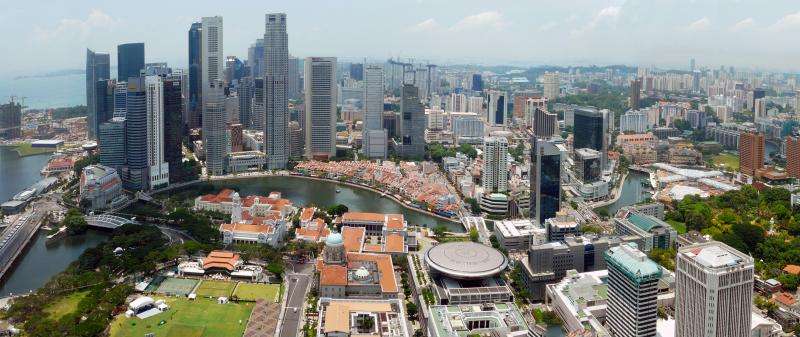Mapping Singapore's urban heat island phenomenon

Researchers in Singapore are developing a microclimatic modelling tool to prevent further deterioration of the country's urban heat island phenomenon.
An urban heat island (UHI) is an urban area that is warmer than the surrounding rural areas due to human economic development. A UHI is also characterised by increased air pollution and decreased relative humidity. In Singapore, where dense urban structures result in the UHI phenomenon, rapid population growth and the expansion of city development are expected to further worsen the quality of urban life.
Led by Dr Poh Hee Joo, researchers at the A*STAR (Agency for Science, Technology and Research) Institute of High Performance Computing are developing an urban microclimatic modelling tool specifically designed for Singapore's urban landscapes to help city developers draw up UHI countermeasures. The tool provides mapping data for temperature, wind, solar irradiation and shading. It aims to hinder any further rises in temperature and ambient noise, thus improving the liveability of Singapore.
"Our multi-physics urban microclimatic modelling tool is considered a pioneer work in the building and urban physics research field. It has great potential for breakthrough and innovation," says Dr Poh Hee Joo.
Three steps were involved in the development of the microclimatic modelling tool. First, the team used computational fluid dynamics (CFD), a fluid flow analysis and simulation method, to produce an urban wind flow and temperature map. Second, they produced a solar irradiance and shading map with daylight simulation. The team then combined the two maps to obtain more accurate urban microclimatic information.
As a result, the new tool is capable of providing numeric values to Singapore's urban microclimatic data. It can also produce high resolution and accurate wind and thermal distribution predictions to an actual urban built-up district, using realistic weather conditions.
Dr Poh Hee Joo and his colleagues are continuing to develop the tool. In 2014, the researchers were awarded government funding to enhance energy resilience, environmental sustainability and urban systems. In the newly funded project, which will run until October 2017, the team is working closely with Singapore's Housing and Development Board and the National University of Singapore, along with other government agencies.
"As a next step, we plan to couple outdoor environmental design with indoor thermal comfort analysis, especially for buildings with an opened atrium and passive design," says Dr Poh Hee Joo. "Ultimately, this can be further developed into a common platform for planning, visualisation and environmental modelling processes."



















